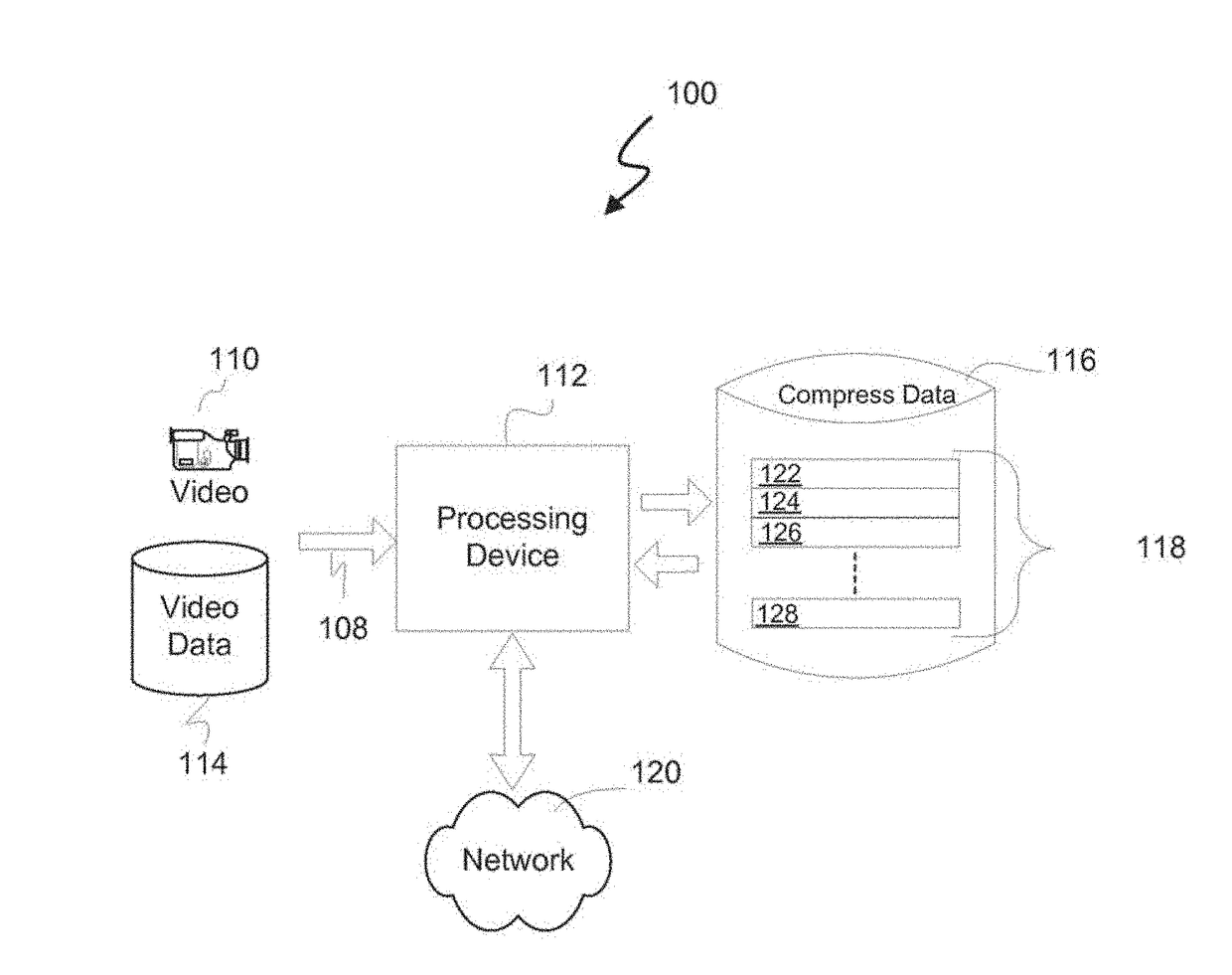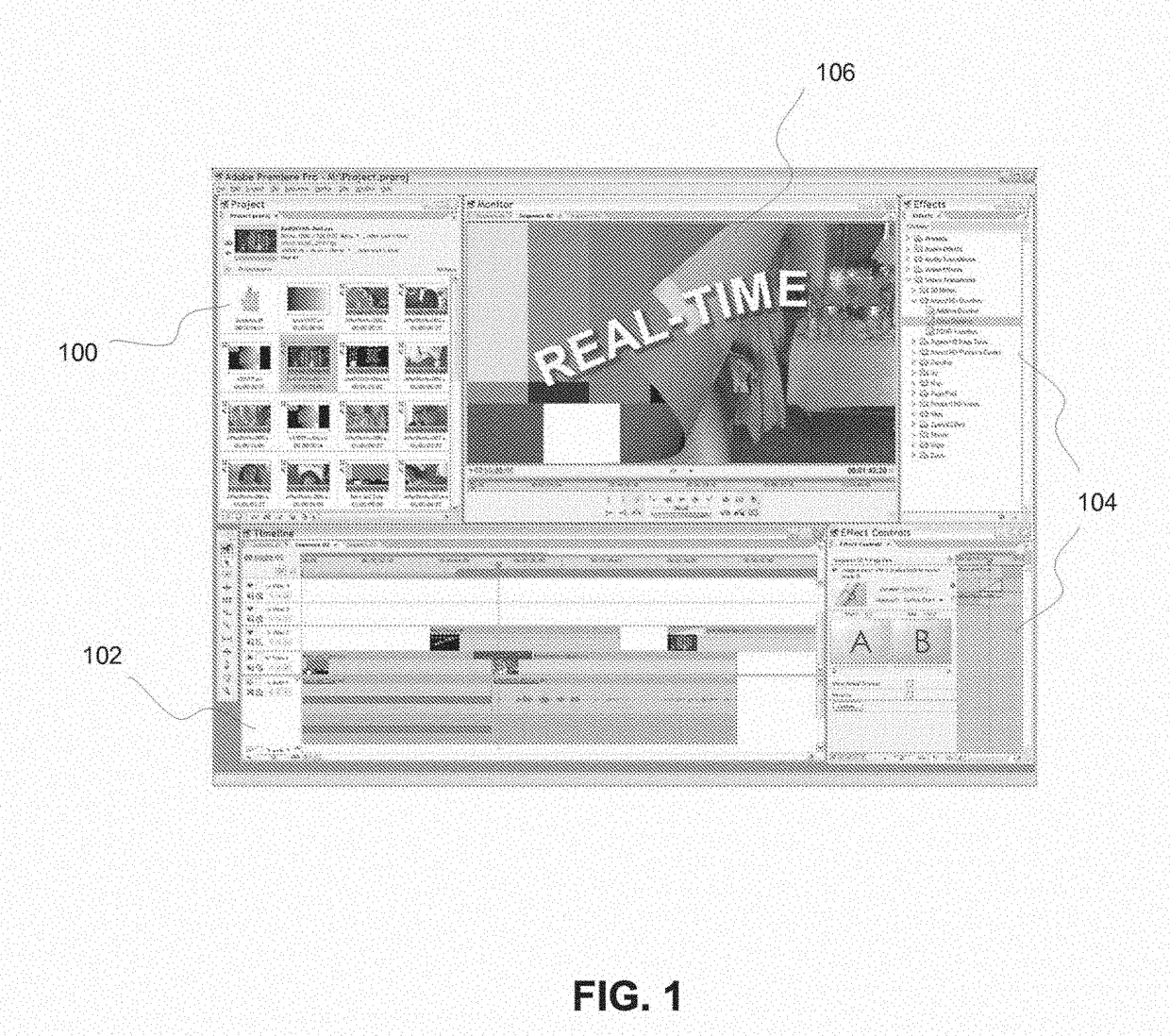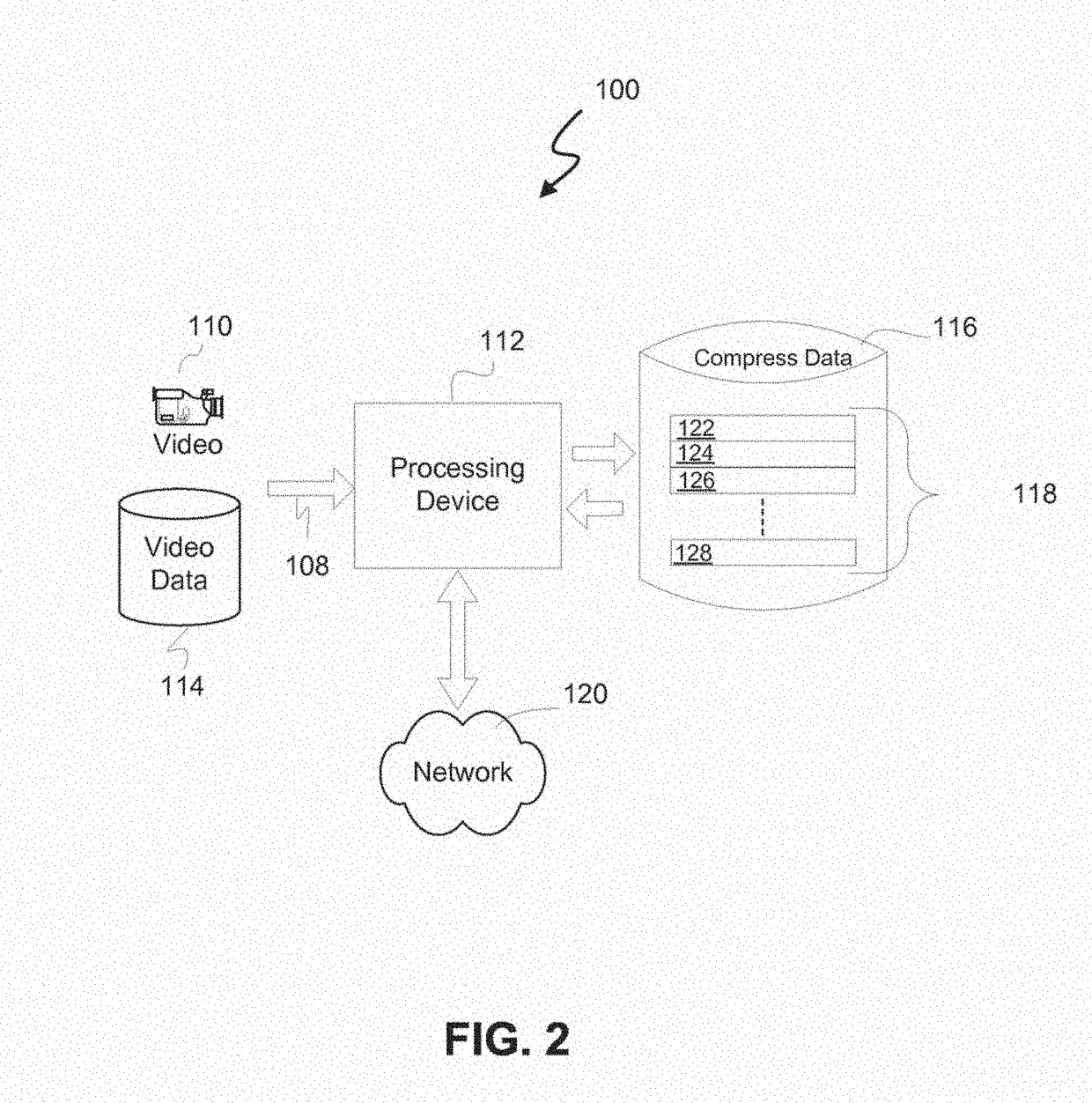Encoding and decoding selectively retrievable representations of video content
a selective retrievable and video content technology, applied in the field of video content manipulation, can solve the problems of limited real-time hd editing to the most expensive and custom-made systems on the market, insufficient standard computing solutions, and inability to support individual hard drives up to 30 mbps,
- Summary
- Abstract
- Description
- Claims
- Application Information
AI Technical Summary
Benefits of technology
Problems solved by technology
Method used
Image
Examples
Embodiment Construction
[0037]FIG. 2 is a block diagram illustrative of a video processing system 100 configured to encode and decode video content in accordance with the invention. In the embodiment of FIG. 2, a source video stream 108 (e.g., sequences of frames of digital images and audio) is received at a processing unit 112, which is configured to encode the source video stream so as to generate a collection of selectively decodable data components 118. The source video stream may originate from a variety of sources including a video camera 110 and a data storage unit 114, and may be compressed upon capture or stored first. As one of ordinary skill in the art will appreciate, the source video stream 108 may be conveyed by a variety of means including IEEE-1394 compliant cabling. PCI bus, HD / SDI communications link, any 802.11 standard, etc. Also shown is a compressed data storage unit 116 configured to store the collection of data components 118 that are produced from the source video stream 108, and a...
PUM
| Property | Measurement | Unit |
|---|---|---|
| frames per second | aaaaa | aaaaa |
| frames per second | aaaaa | aaaaa |
| frames per second | aaaaa | aaaaa |
Abstract
Description
Claims
Application Information
 Login to View More
Login to View More - R&D
- Intellectual Property
- Life Sciences
- Materials
- Tech Scout
- Unparalleled Data Quality
- Higher Quality Content
- 60% Fewer Hallucinations
Browse by: Latest US Patents, China's latest patents, Technical Efficacy Thesaurus, Application Domain, Technology Topic, Popular Technical Reports.
© 2025 PatSnap. All rights reserved.Legal|Privacy policy|Modern Slavery Act Transparency Statement|Sitemap|About US| Contact US: help@patsnap.com



